Description of potato pests, treatment and control
It is difficult to find a personal plot where potatoes are not grown, it is not for nothing that it is called the second bread. But harmful insects like the potato scoop can wreak havoc on crops. To prevent this from happening, you need to regularly inspect the bushes. Moreover, there are a lot of pests who like to eat potatoes. In order not to lose the harvest, you need to follow all precautions.
Content
- 1 How to deal with potato pests?
- 2 Who is eating potatoes?
- 3 What are the control measures against potato aphids?
- 4 How to get rid of potato moths?
- 5 Fighting the potato scoop
- 6 How to remove bedbugs from potatoes?
- 7 How to deal with leafhoppers?
- 8 How to get potato spanker out of the site?
- 9 How to get rid of a potato lady?
- 10 Pests and their habitat
How to deal with potato pests?
Before resorting to chemicals, you can try safer control measures to get rid of insects on your potatoes. Especially if the site is small. The number of time-tested methods is huge. It is only necessary to notice in time that the leaves begin to dry out, and the bushes grow poorly.
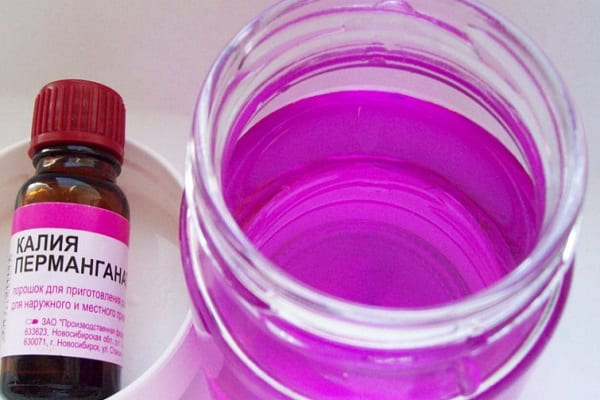
Potato pests and the fight against them using folk methods:
- Potassium permanganate. The simplest and most common recipe for potato pests is a solution of potassium permanganate. For 1 liter of warm water, you need to take 50 g of potassium permanganate and spray the bushes with the resulting solution. This method will quickly remove insects from the area.
- Wood ash. You can also spray the bushes with a solution of wood ash and warm water if insects begin to eat the potatoes. When planting tubers, a small amount of ash can be poured into each hole. This will scare away insects that are in the ground and gnaw potatoes, and also prevent larvae from appearing in the soil. If a wireworm appears on the site, then together with the ash, lime flour is added to the holes.
- Beer traps. To save potatoes from the bear, they usually make beer traps. On the site you need to arrange bottles of beer, its smell attracts a bear. The insect will quickly disappear from the garden. And in order to get rid of the Colorado potato beetle in early spring, you can scatter chopped potatoes throughout the site.
- Digging up the site. To prevent the appearance of potato pests in advance, in the fall after harvesting, you need to dig up the site. Most insects prefer to hibernate in the ground and lay their larvae there.
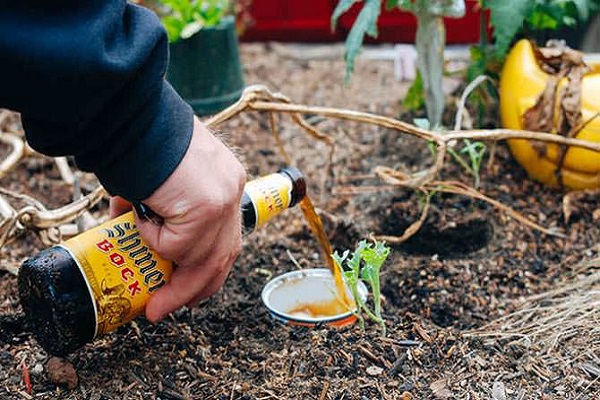
Who is eating potatoes?
But insects are not the only ones that can spoil potato crops. Often a mouse or a shrew gnaws a potato. It is very easy to understand that rodents spoil tubers. Teeth marks are clearly visible on the tubers.
Colorado potato beetle larvae can also gnaw potatoes in the ground. The pest gnaws small holes in the tubers. If there are a lot of larvae, then the potatoes can be heavily eaten up. When harvesting, you can sometimes see the larvae inside the potato.
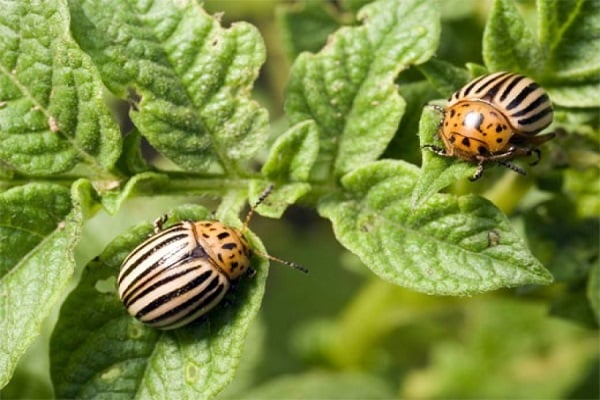
Another pest gnawing tubers is the wireworm. Eating tubers, he gnaws "passages" in them as if piercing with wire.
If it is relatively easy to deal with beetles that eat the tops on potatoes, then it is much more difficult to deal with underground pests.
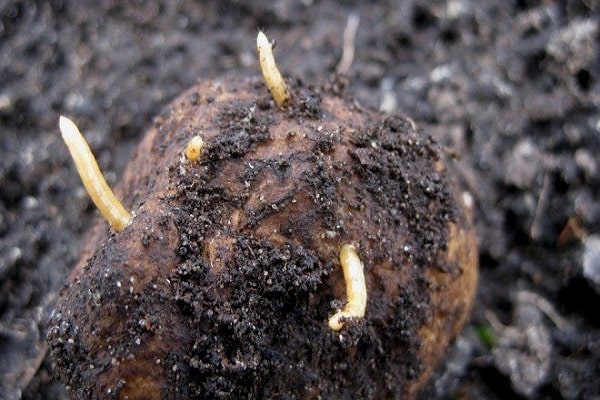
What are the control measures against potato aphids?
Despite its name, potato aphids can appear not only on potatoes, but also on other crops. The control measures will be similar.
The potato aphid is a small insect with an elongated body. It is usually green in color. There are two types of aphids:
- Winged.
- Wingless.

The winged potato aphid is slightly larger.
At first, it is very difficult to understand that bugs have appeared on the potato. They form colonies on the underside of the leaf and at first there are no visible changes on the tops. They begin to actively gnaw the tops of potatoes when the colony grows. Then the aphid moves to the outside of the leaves, feeding on young and juicy shoots. The tops begin to dry out gradually.
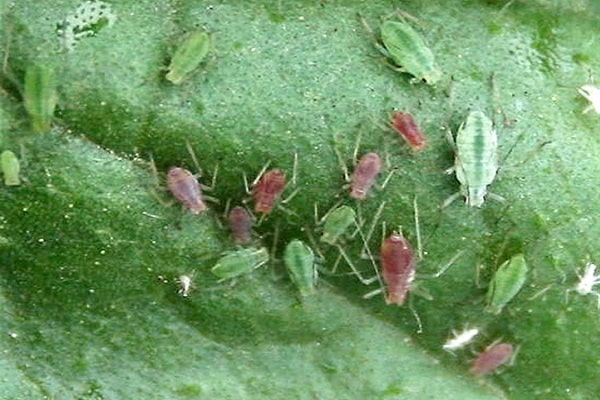
We fight aphids on potatoes:
- First of all, you should dig up the site in the fall and spring, since the aphid prefers to winter in the ground. Weeds should also be removed regularly. After all, it is their appearance that contributes to the development of aphids on the tops.
- If ants appear on the site, then you need to urgently take measures to combat them. After all, it is they who transfer the aphids to the places where the anthill is located.
- Such drugs as Rovikurt, Fosbecid and Actellik have proven themselves well. At the first signs of the appearance of potato aphids, you can spray the bushes with these preparations.

How to get rid of potato moths?
What is the description and treatment for potato moth? Potato moth Is a dangerous pest that can cause serious damage to crops. Adults are a small brown butterfly. But the greatest danger to tubers is moth larvae.
The larvae that eat up potatoes are characterized by a yellow-pink body, which reaches 1 to 3 cm in length.
Fighting potato moths:

- In order not to have to fight with it, when planting, you need to dig deep holes. And during hilling, the height of the soil layer should be at least 15 cm.
- If the moth has already appeared, the bushes are sprayed with chemicals. You can use drugs for the Colorado potato beetle. But it should be remembered that in this case it is possible to harvest no earlier than a month later.
- Often moths appear in the basement where potatoes are stored. There is salvation from it. To do this, you need to take Lepidocide and Planriz (2 L: 0.5 L). Dip the potatoes in the solution for 20 minutes. After 3-4 days, potatoes can be eaten.
- So that the moth does not start up during harvesting, it is worth digging it up until the tops are dry. To do this, 1 week before harvesting, all tops are mowed. There should not be any tops on the site, they are immediately collected and thrown away.

Fighting the potato scoop
The potato scoop is a small butterfly that looks like a brown moth. A sexually mature specimen does not cause much harm to the potato, which cannot be said about caterpillars.
The scoop gnaws holes right in the potato tubers, thereby causing great harm to the crop. The worm appears mainly on waterlogged soil, therefore, if there have been prolonged rains for a long time, then there is a high probability of the appearance of moth larvae. The larva crawls along the stem inside the tuber and begins to eat it from the inside, without touching the peel and leaving no holes in it.
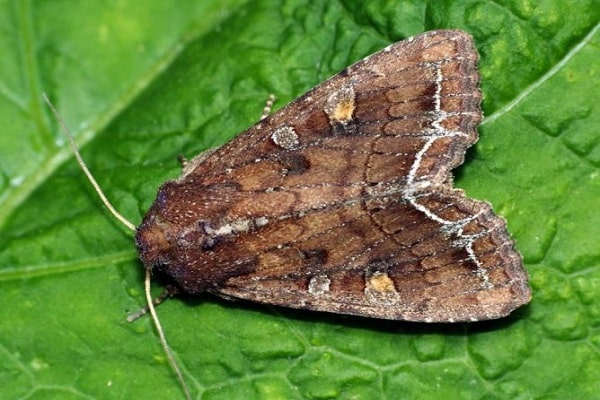
How to deal with potato scoop larvae:
- Nemabakt. If the bush has become painful, then you can use the drug Nemabact. You need to breed it according to the instructions and process the area with potatoes. It is better to buy the product in specialized stores so as not to buy a fake.
- Sagebrush. The scoop does not tolerate the smell of wormwood.To prepare the broth, you need to take 3 liters of water and 1 kg of wormwood. Boil the broth for about 20 minutes. Then let it brew and strain. Potatoes should be watered before the flowering period and 2 weeks after it starts.
- Prevention. The potato scoop will not lay the larvae if, after harvesting the potatoes, dig up the area and remove all weeds. You also need to weed the beds regularly.

How to remove bedbugs from potatoes?
How to deal with bedbugs in the Irkutsk region? Bed bugs can also ruin potato crops if they are not dealt with in time. The bugs that occur on potatoes are called cruciferous bugs. Most often found on cabbage.
Ways to get rid of bedbugs:
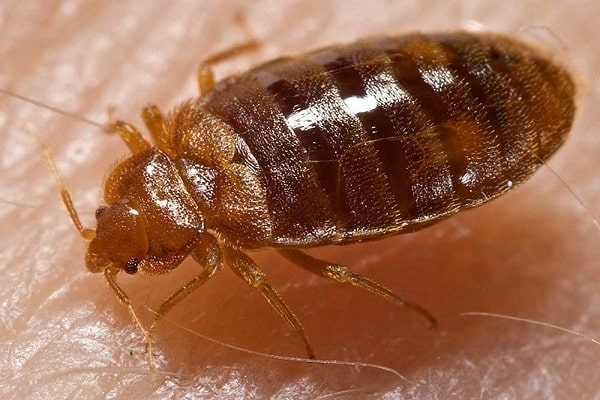
- Chemicals. It is better to use chemicals if the bugs began to actively multiply and cause serious damage. You can use any drugs against agricultural pests (Aktara, Gladiator, Zolon, Fagot).
- Onion peel. Bedbugs do not tolerate the smell of onion husks, so to deal with them, you need to take 1 kg of husks and 5 liters of water. Prepare a decoction and water the beds with it, paying special attention to areas where bedbugs appear in large quantities. You can also use a decoction of wormwood.
- Traps. If you do not start taking action in time, the bugs will eat the entire crop. Therefore, a cloth dipped in kerosene can be laid out among the beds.

How to deal with leafhoppers?
The leafhoppers not only eat parts of plants, but also suck the juice out of them, thereby damaging the crop. The leafhopper looks like a fly, only gray-green in color.
Fight leafhoppers as follows:
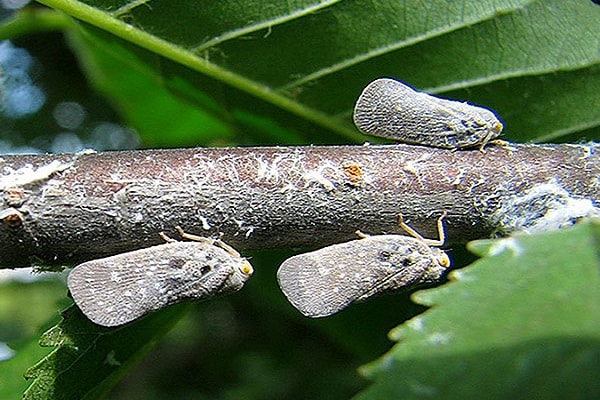
- There should be no leaves on the site after harvesting. The insect can lay eggs on it and in the spring the larvae will begin to actively hatch.
- Several feeders can be hung near the plot. The birds eat cicadas, thereby preventing them from breeding in the area.
- If the soil was heavily contaminated, then for several years in a row onions or garlic should be grown in this place.
- An effective method of pest control is chemical preparations. The drugs Akarin, Calypso and Decis have proven themselves well. Sprinkle potatoes preferably in warm, windless weather. The most optimal time is early morning or evening. It is important to ensure that the drug falls on the lower part of the leaf, because it is from this side that the leafhopper eats the tops. If after processing part of the solution remains, then it must be poured.
- Garlic infusion will help get rid of the larvae that the leafhopper lays. Pour 300 g of greens of garlic with 3 liters of water and leave for a week in a dark room in a closed container.
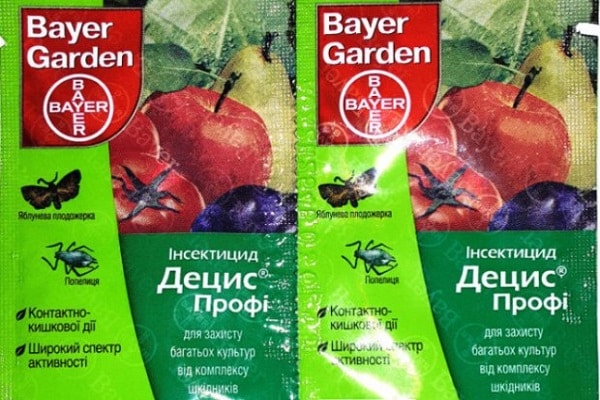
How to get potato spanker out of the site?
From insects that infect potatoes, the most effective means of control is prevention. Potato spanking is also common in plots. A spunk eating potato tops is very dangerous if you don't get rid of it in time. It is a small black bug.
As a rule, black spanker is found in the south, but due to the fact that winters are not so frosty and summers are hot, spanish larva can appear in the central regions.

How to get rid of spanky on potatoes:
- You can collect the crap manually if there are not very many beetles on the site. But you should be aware that the insect secretes a substance that, when it gets on the skin, can cause abscesses and inflammation. Therefore, it is recommended to collect spanking with thick gloves.
- The second way is to treat the bushes with pesticides. Any insect repellent chemical can be used.
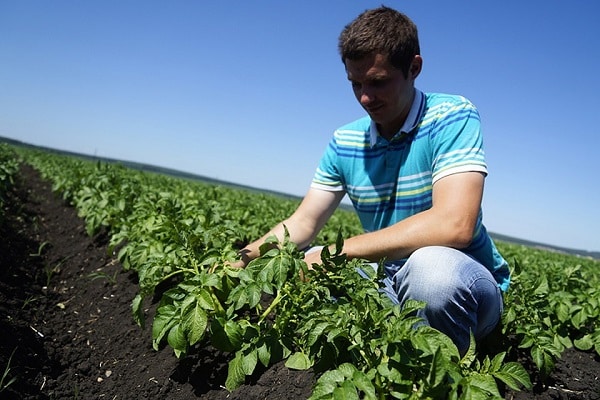
How to get rid of a potato lady?
The potato bug is a small beetle with orange-colored wings and body. There are black dots on the wings. The potato lady feeds on leaves without touching the veins. Over time, the leaf begins to dry out and die off.
The potato ladybird is practically indestructible.The only way to get rid of it is to spray the bushes with chemicals. But after a while, most likely, the bugs will reappear.

You can use special biological preparations. Their main advantage is that they are harmless to humans. But there is one significant drawback - during the rain, they are quickly washed off the plants. Therefore, you need to spray the tops on a sunny day.
Pests and their habitat
You need to inspect the entire bush regularly in order to notice pests on the site in time. But, depending on which part of the plant will dry up, you can make an assumption about which insect started on the site:
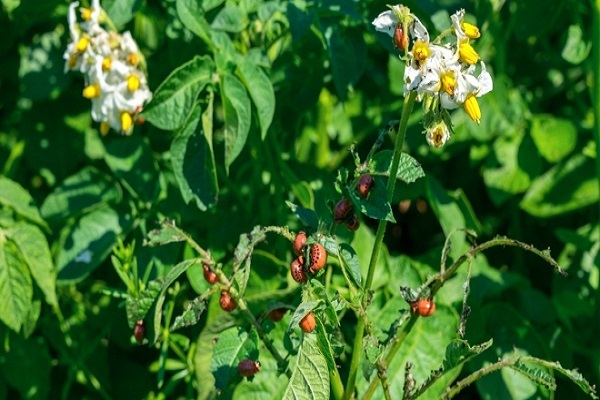
- The potato fly prefers to breed mainly on leaves.
- The foliage of the potato is eaten by insects such as the Colorado potato beetle and its larvae, leafhoppers and the potato flea.
- Bush stems often infect Colorado beetles, potato moth, scoop and bear (underground parts of the stem).
- Potato tubers are gnawed by mice, moles, wireworms, nematodes, bear and potato scoop larvae.
The easiest way to prevent the appearance of some insects is to dig up the area and remove weeds in time, as well as inspect the potato bushes. Then the harvest will be good.
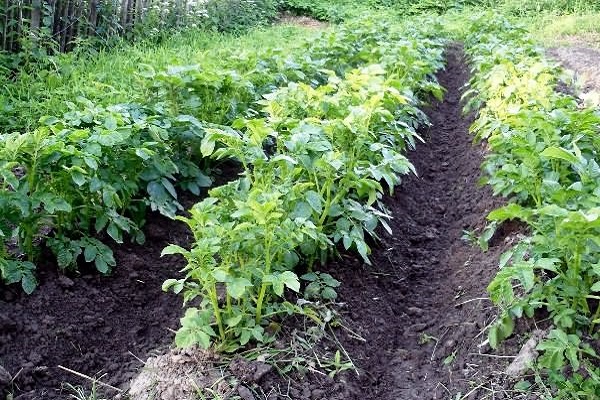

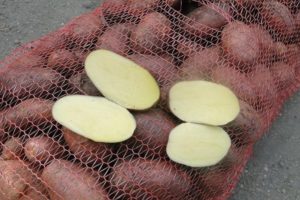


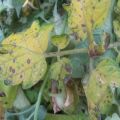
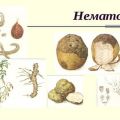
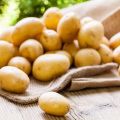
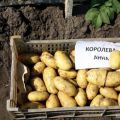
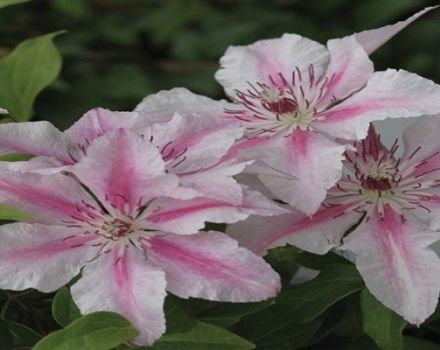
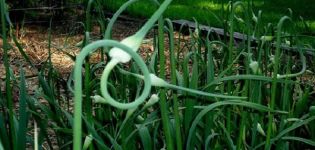
After treating the soil with disinfectants, it is imperative to add top dressing. Bioactivator very well restores soil composition.BioGrow". It is convenient to use, it works perfectly.